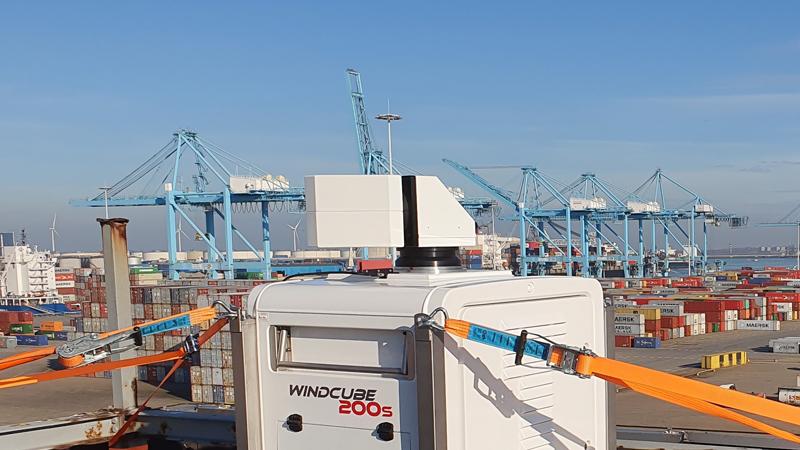Navigating the wind at ports: Unraveling maritime dynamics with WINDLASS JIP and WindCube Scan
In the realm of maritime operations, comprehending the intricate dynamics between wind forces and ships is paramount for ensuring safe and efficient navigation. The Wind Loads on Ships and Structures Joint Industry Project (WINDLASS JIP), which was conducted by the Maritime Research Institute Netherlands (MARIN) and ended in October 2022, represents a significant stride towards unraveling the complexities of the 3D wind field in exposed ports and waterways.
The primary goal of WINDLASS JIP is to cultivate a practical and reliable tool for predicting wind loads on ships, encompassing critical aspects such as drift angle, berthing loads, and mooring line loads by leveraging advanced technologies and collaborative efforts. As a project partner, we provided high-resolution 3D wind measurements above several European seaports using Vaisala WindCube® Scan lidar.
Get an inside look at Vaisala’s participation with our case study, published at the beginning of the project: "Meeting the wind head on - Using the WindCube Scan to help characterize wind hazards and minimize wind impact on port operations."
The importance of real-world data
To support WINDLASS JIP, Vaisala deployed a single WindCube Scan 200S long-range lidar with a range of 6 km. The lidar is designed to measure the 3D wind field with unparalleled accuracy to generate highly detailed maps of the wind environment.
WindCube Scan was instrumental in capturing complex wind patterns within exposed ports and waterways in key ports such as Rotterdam, Amsterdam, Hamburg, and Antwerp. This level of detail was crucial for developing a comprehensive understanding of how wind forces interact with ships in diverse maritime environments.
WindCube Scan key contributions
One of the key strengths of WindCube Scan is its ability to provide real-time data on wind conditions. This allowed researchers and industry professionals to make informed decisions based on the most up-to-date information, enhancing safety and efficiency in maritime operations.
WindCube Scan data served as valuable validation for the computational models developed during WINDLASS JIP. This ensured that the predictive tools created were grounded in real-world observations, boosting their reliability in practical applications.
Findings of WINDLASS JIP
The culmination of WINDLASS JIP is a testament to the successful collaboration between industry experts, researchers, and cutting-edge technologies.
The project's findings, available on the MARIN website, present a comprehensive overview of 3D wind field dynamics in exposed ports and waterways. These results provide a foundation for the development of practical tools that can accurately predict wind loads on ships, offering a significant leap forward in maritime safety and efficiency.
By gaining a deeper understanding of the 3D wind field and its impact on ships, the maritime industry is better equipped to navigate challenging conditions with confidence and precision. The contributions of WindCube Scan data have not only advanced industry knowledge but have also paved the way for practical solutions that enhance the safety and efficiency of maritime operations.

